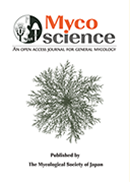Volume 54, Issue 6
Displaying 1-10 of 10 articles from this issue
- |<
- <
- 1
- >
- >|
Short communication
-
2013Volume 54Issue 6 Pages 401-405
Published: 2013
Released on J-STAGE: March 07, 2023
Download PDF (1117K)
Full paper
-
2013Volume 54Issue 6 Pages 406-419
Published: 2013
Released on J-STAGE: March 07, 2023
Download PDF (4455K) -
2013Volume 54Issue 6 Pages 420-425
Published: 2013
Released on J-STAGE: March 07, 2023
Download PDF (1446K)
Short communication
-
2013Volume 54Issue 6 Pages 426-428
Published: 2013
Released on J-STAGE: March 07, 2023
Download PDF (345K) -
2013Volume 54Issue 6 Pages 429-432
Published: 2013
Released on J-STAGE: March 07, 2023
Download PDF (720K) -
2013Volume 54Issue 6 Pages 433-437
Published: 2013
Released on J-STAGE: March 07, 2023
Download PDF (1781K)
Note
-
2013Volume 54Issue 6 Pages 438-443
Published: 2013
Released on J-STAGE: March 07, 2023
Download PDF (589K)
Short communication
-
2013Volume 54Issue 6 Pages 444-448
Published: 2013
Released on J-STAGE: March 07, 2023
Download PDF (443K)
Full paper
-
2013Volume 54Issue 6 Pages 449-457
Published: 2013
Released on J-STAGE: March 07, 2023
Download PDF (668K) -
2013Volume 54Issue 6 Pages 458-468
Published: 2013
Released on J-STAGE: March 07, 2023
Download PDF (4019K)
- |<
- <
- 1
- >
- >|
